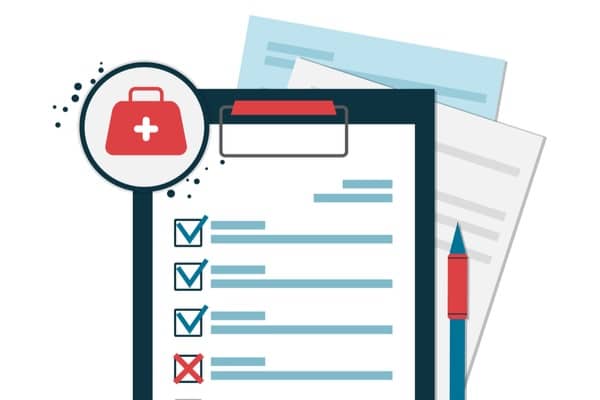Medical information and records are the most important aspect of any personal injury case, mainly because PI claims are entirely dependent on what is in them. Personal injury medical records, and the management of them, is therefore, a key component of any PI firm, large or small.
Generally, there are multiple medical records for each case, and therefore, obtaining, managing, and analyzing the medical records can be a daunting task for personal injury law firms. This needs to be taken seriously as there can be repercussions if you miss any medical detail in the process.
Fortunately, there is technology to save the day. Modern personal injury case management system can help you capture and manage medical records, with a guided approach, right from intake, through to discovery.
However, general case management software built for all legal practice areas cannot manage medical information. Such software mostly doesn’t have built-in medical record features because they are not developed specifically for personal injury, but all practice areas. Often, to provide medical record functionality, generic software is integrated with third-party tools to accommodate personal injury lawyers- a somewhat mismatched approach!
There are two problems with this approach; firstly, if you use third-party tools within your case management software to perform core tasks, then there is a risk of losing information during the exchange. Secondly, additional fees are levied to integrate third-party tools, which are then added to your subscription charges directly or indirectly. This means you pay additional dollars for the add-on, which is supposed to be a core functionality of the personal injury case management software in the first place.
But not anymore! CloudLex® is built specifically for personal injury lawyers. It focuses on the most essential and relevant functionalities to their practice, creating a practice-focused, frustration-free experience.
Here are three ways CloudLex helps you manage medical records and files seamlessly and effectively.
Contents
1. Capture incident details at intake stage
CloudLex’s Intake Manager gives you intuitive intake forms to capture information specific to the injury type.
When you interview the clients, obtain a complete medical history, with as much detail as possible. If they have billing records, copy and retain those, as they will contain relevant contact information for healthcare providers.
CloudLex’s Intake Manager helps you record all the relevant and necessary information obtained related to the incident, injury, and medical treatment. The intuitive process guides you through the intake with insightful questions such as; ‘Whether the injury was claimed?’ and ‘Was the plaintiff taken to a hospital?’ If yes, you’ll be guided to record the hospital information, etc.
If the medical provider treated the plaintiff, then you can record the details of the medical provider and type of treatment the plaintiff received.
All this information can help you request medical records from the hospital or medical service providers at a later stage.
2. Manage plaintiff medical information
Once attorneys complete the intake process, it can then be converted into the matter, transferring all the intake information, including incident details, with just a click of a button.
CloudLex’s Matter Manager will have all medical information from intake ready for you to process the case further.
You can then capture, manage, and track all the information collected during the investigation. Additionally, you can link document files you requested from service providers to each plaintiff’s medical record under the medical information details of a particular matter.
A medical file includes medical bills, liens, tests, treatment, and physician orders. Collectively, all these medical files and documents of the treatments will give a comprehensive view of medical history, and when organized, it supports your litigation process. Therefore, it is essential to organize them effectively.
CloudLex makes it easier for the attorney to analyze and quickly find information in the record relevant to the personal injury claims, which ultimately helps law firms to more rapidly prepare and present the case.
3. Track medical report requests
Personal injury lawyers handle multiple cases at a time and have to make various medical report requests for the plaintiff in a case.
Turnaround of each request varies based on location, type, size of the service provider, and can take several weeks on average. Moreover, these requests can easily be misplaced, can have the incomplete authorization, and missing payment details.
Therefore, to gather accurate records, paralegals/ legal assistants regularly have to follow-up with nursing homes, medical service providers, etc. If done manually, you can risk losing crucial medical information and put the entire case in jeopardy.
Enter CloudLex; its built-in reports can rescue you from the struggle of tracking medical report status manually. You can run medical request reports of all your matters to track and analyze; treatment types, status, linked documents, service providers, physicians, and so on. So that everyone stays informed, and follow-ups on track, helping you shorten turnaround time.
Reports also save you from the last-minute hassle of finding medical records and ensure that you never miss the deadline.
Speaking of deadlines, request a demo with our cloud consultant today and learn more about our all-in-one cloud-based personal injury software designed to meet all your personal injury needs—especially if those needs include secure and efficient medical record management.
Recommended Reading:
1) Intake not Mistake: 5 Mistakes to Avoid During Client Intake
2) 6 Ways to Determine the Best Plaintiff Litigation Management Software
3) Let’s Talk About Legal Document Management

